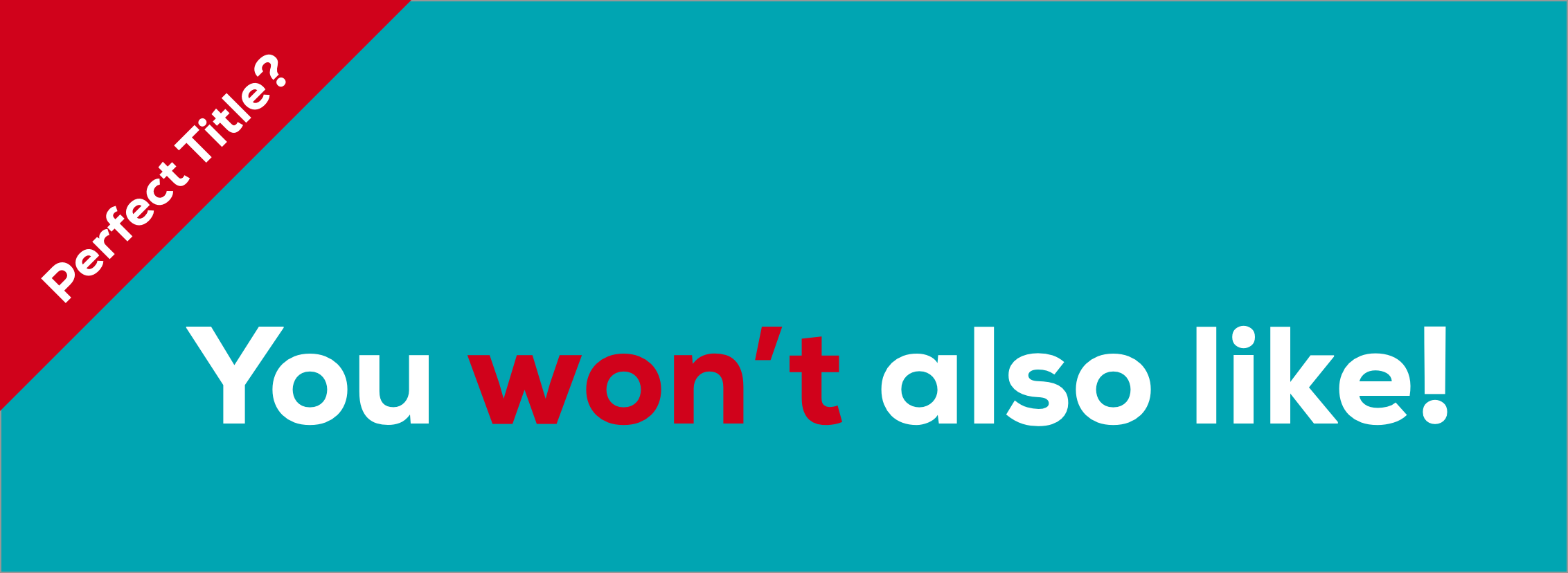Are you also bored by standard Amazon-like personalization titles like „You may also like“? Yes, of course, that’s a standard recommendation title everyone expects in online shops, but maybe a non-standard title is more surprising and will attract more customers?
In the following you’ll get a receipt to find out the perfect recommendation title for exactly your use case.
Step 1: Answer the following questions
- What is the average age of your customers?
- What target group are you focusing on?
- Are most of your customers female or male?
- In which context do you want to display your recommendations (on product pages, the cart page, in the blog)?
- Does the title also work on mobile devices?
- Is it possible to colorize your title?
- Are uppercase letters possible in your Corporate Identity (CI)?
- Do you want to display different titles for different target groups?
- Do your customers understand what personalization is or do they need some explanation?
- Do you want to focus on direct sales or visiting time increase?
Step 2: Analyze your answers
- The average age of your customers is very important for your recommendation titles. For young customers you can use a more personal language, for senior customers you have to be more formal. General titles work better for older customers, younger ones expect surprise, flexibility and freshness.
- Depending on your target group you can form your title in a very specific way. Despite the age in question 1, you also know from your experience how specific you have to get. It depends on the industry how exclusive your products are and if you have to tell the customers what’s contained in their recommendations. E.g. in a bike online shop a title like „Your accessories“ could work great. But the same title doesn’t work at all for fashion customers, because it’s not clear enough, which accessories are meant (bags, shoes, jewelry).
- Female or male, this is very important. Women expect smooth and nice recommendation titles. Men instead are more analyzing and want to know what’s contained and why. Think about which gender you’re addressing where. If you address both, then you need to use different recommendation titles. Then you have to answer these 10 questions for women and men separately.
- The context is defining what you are displaying. E.g. cross-sells only make sense on product pages and on the cart page. Make clear what you want to offer with the recommendation widgets in your title. „Others Also Like“ is not clear enough, a title like „Cross-Sells for Your Current Product“ is too technical and „Products With the Same Category Out of Your Personal Product Pool“ is too complex. If you mix up these three titles you could get something like „Matching Your Taste for Your Selection“. „Taste“ sounds personal, „matching“ sounds like you get the right recommendations and „selection“ refers to the current product. Great to understand for the current visitor.
- Keep in mind: nowadays most platforms have more than 50 % mobile traffic through tablets and smartphones. Your title must also work on mobile devices in length, style and content.
- Is it possible with your CI to colorize your titles? It’s nearly the same compared to a multivariate test with colored checkout buttons: think about giving your recommendations more visibility with colored titles.
- Uppercase letters are also a great way to highlight your recommendations. Again of course, it should fit your CI and it may not be to blatant.
- Think about displaying different titles for different target groups. Use e.g. English terms in other languages in the fashion area and use technical terms in stores that sell e.g. hardware.
- If your customers don’t know what personalization is or even worse, if they are afraid of titles like „We Know What You Want“, then don’t “frighten” them anymore. Then you have to make your titles more general and less personal.
- A very important question for your titles is, if you want to make direct sales with your recommendation widgets or if you e.g. want to increase the visiting time. Or do you want to get traffic back to your shops from e.g. product recommendations in a blog? Think about titles like „Your Personal Recommendations for Today“, so put more pressure on the customers to buy instantly within a time limitation, or a title like „Your Next Browsing Possibilities“ as an extremely opposite example.
Step 3: Combine and Decide
After working through the questions above you will have a cluster of answers and terms as base to decide on. Use the questions for every recommendation widget you want to add to your website. Take care for the context of the recommendation widget. The context is one of the most important criteria to match the interests of your visitors.
Also, after answering the 10 questions above, you won’t have the one and only answer, you will have a pool of titles you can work with and compare the performance of your recommendation widgets. Take your time to measure the different widgets and really compare their performances. Review your titles and the widgets constantly after defined time frames, because also seasonal changes can drastically impact the performance of your titles. These time frames depend on your business case, switching seasons etc. But you can take one review every month as a rule of thumb.
Good Examples
- “Our Selection for You”: doubled personal, because your team chose the recommendations for the current customer
- “Sale Products Picked for You”: specific, describes what’s contained and the customer knows that the recommendations are hand-picked for him
- „Who bought this also bought“: this is a very well-known title – this can be positive or negative
Bad Examples
- „You Might Also Like“: the customers won’t know what’s contained
- „Personal Recommendations“: very general title and the word „personal“ may be to „spooky“ for the customer
- „Who bought this also bought“: as mentioned in the good examples – very well known and therefore may not eye-catching enough for your customers. You have to test this one and check, if it works for your target group
The Impact of a Perfect Recommendation Title
You won’t believe it: the recommendation title is one of the first eye catchers for your recommendations and therefore the importance cannot be overstressed. The visitors will knowingly or unknowingly read this title and recognize if the contents match.
That’s also important: sometimes you just have to change the title to improve your recommendation’s performance by more than 100 %! It’s really unbelievable, but customers sometimes seem to not even recognize the recommendations with bad titles at all. By just improving the title with the rules above the performance has drastically improved. Now think about what’s possible when you not only change the title, but also configure your recommendations with a perfectly fitting recommendation rule?
With Recolize you can very easily switch your recommendation titles. Just create an endless number of rules, configure matching titles for specific urls and define fallbacks for e.g. unknown new visitors. You have countless possibilities.



